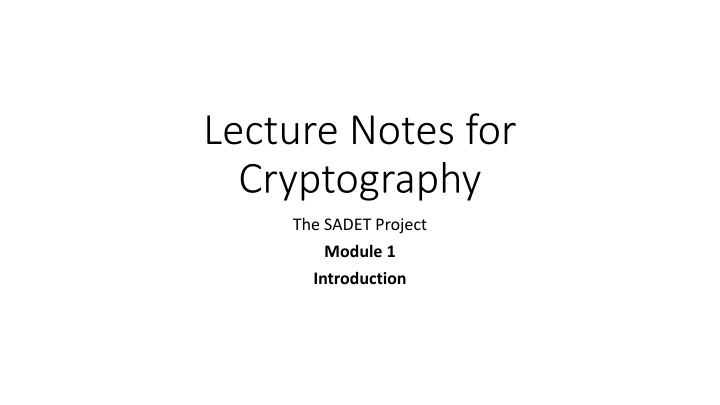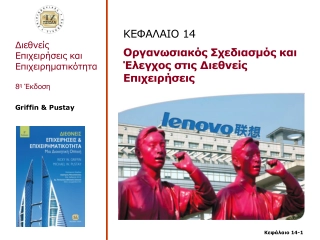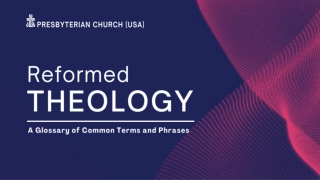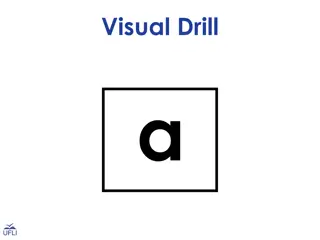
Introduction to Cryptography: SADET Project Module 1 Insights
Delve into the world of cryptography with insights from the SADET Project Module 1, discussing the importance of encryption, historical methods, and current applications in security and privacy.
Download Presentation

Please find below an Image/Link to download the presentation.
The content on the website is provided AS IS for your information and personal use only. It may not be sold, licensed, or shared on other websites without obtaining consent from the author. If you encounter any issues during the download, it is possible that the publisher has removed the file from their server.
You are allowed to download the files provided on this website for personal or commercial use, subject to the condition that they are used lawfully. All files are the property of their respective owners.
The content on the website is provided AS IS for your information and personal use only. It may not be sold, licensed, or shared on other websites without obtaining consent from the author.
E N D
Presentation Transcript
Lecture Notes for Cryptography The SADET Project Module 1 Introduction
Opening Crypto News in April 2018 Ray Ozzie suggests a secure backdoor to smartphones in Wired Magazine Google s Chat does not have end-to-end encryption Crypto crime waves Crypto in daily life Do you see the lock in your browser? Have you heard of bitlocker or filevault ? Do you use a password manager like 1Password?
Why Cryptography? Cryptography can enable solutions! The Target Breach (December 2013) Debit cards were not as impacted as credit cards Why? Example of Confidentiality Have you cashed a check at a bank? Have you paid bills using online banking? Have you received a text with a code to verify your log in? Example of Entity Authentication How do you know if you are really connecting to Amazon.com? Is there someone in the middle listening ? Or worse changing the data? Example of Integrity
Why Cryptography? (2) Storing and verifying passwords Use one-way hash functions Digital documents Need signatures like physical documents, but signatures that cannot be forged Blockchains Distributed ledgers that are secure from tampering They all make use of keys Key establishment itself needs cryptography!
Camouflaging, Concealing, or Ciphering For thousands of years people have used methods of concealing information Concealing Ciphering or Encryption Tattoo messages on scalps and allow hair to grow Steganography Art of hiding information in the midst of irrelevant data This is NOT cryptography Requires a lot of overhead Useful to hide the existence of secret communication
Some History Biblical times (500 BC) Substitution of one alphabet by another in a systematic way Sparta (500 BC) Scytale (sitaali) Caeser Cipher (50 BC) Described by Julius Caeser Example of a Shift Cipher Leon Battista Alberti invented a mechanical cipher disk in 1470 AD Vigenere (1585 AD) Created an autokeyed cipher Source: Virtual Exhibitions in Informatics at http://cs-exhibitions.uni-klu.ac.at/
Some History (2) Vernam (1917 AD) Created the one-time tape for teletypes Invented earlier by Frank Miller in 1882 World War Creation of many new ciphers ADFGVX code by the German military in World War 1 Product cipher Cryptography and Mathematics Linkages started in the 1920s Extended to World War II Information Theory played a role in 1949 when Shannon defined perfect secrecy
Modern Times All encryption algorithms till 1976 were secret key algorithms Also called private key algorithms or symmetric key algorithms Public key algorithms were introduced in 1976 by Whitfield Diffie and Martin Hellman RSA in 1977 (Originally discovered in the 1950s) Data Encryption Standard (DES) (1977) Opened up a new area of research for securing digital information Symmetric key algorithm Elliptic Curve Cryptography (1987) Smaller key sizes for public key encryption Advanced Encryption Standard (2001) The standard for symmetric encryption Secure Hash Algorithm -3 (SHA-3) (2015) The emerging standard for hash functions 8






















